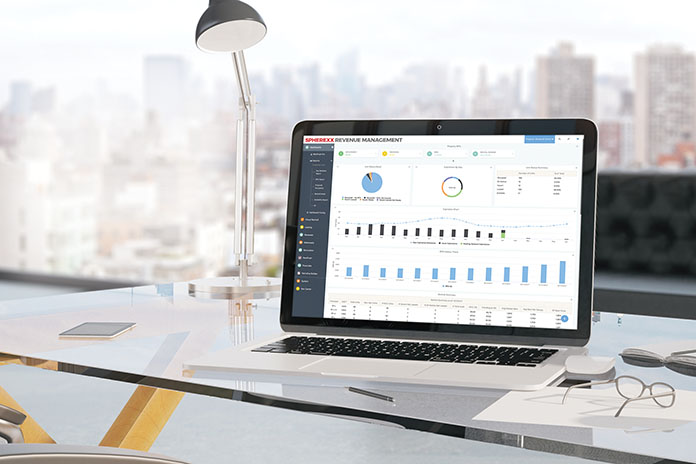A form of artificial intelligence (AI) has been utilized in the multifamily industry since the first revenue management software programs were created 18 years ago to set rents.
In that first phase of what also can be called business intelligence, property management companies created dashboards that gathered up larger sets of data than were previously available to their customers, enabling them to look at that data in the aggregate and gain a broader view of the market when making decisions.
In the next phase, the multifamily tech companies hired data scientists to create algorithms based on customers’ priorities that would evaluate data and provide insights no longer limited by the user’s ability to recognize trends.
Utilizing advanced business intelligence products, they address specific problems faced by most customers and go beyond presenting data to actually making recommendations. Learning systems assess the results of those recommendations in an attempt to improve them over time.
As AI-driven machines make broader correlations between information streams and as their human operators learn better ways to feed the data, they will tackle and solve more complex problems, said Dhar Sawh, industry principal at Yardi Systems, the Santa Barbara, Calif.-based company that has been providing business operations software for the real estate industry since 1985.
Smart applications
Work over the past four years in the AI realm is beginning to bear fruit for Yardi. The company launched the beta version of Yardi Elevate, a multifamily property management device designed to leverage AI to lower cost, balance risk, drive value and recommend actions to help customers operate their properties more efficiently.
In time for its RealWorld conference in July, Richardson, Tex.-based RealPage released Underwriting Analytics, an on-demand, AI-driven analysis of asset value, designed to reduce investment risk and accelerate deal flow.
Building a foundation
“Customers want a system that will not only tell them when there is an issue, they also want recommendations of what they can do about it. But before we can do that with AI, we must ensure that our data is clean,” said Sawh.
Yardi spent a lot of time making certain the data sets being fed into Elevate are clean, rich and diverse enough to avoid introducing bias into the algorithm, which has been the most challenging aspect of moving Yardi into AI, said Sawh.
“We are not just taking data and throwing it at an algorithm. We are very specific in how we are going at this. And, the information we feed into the system must represent a large enough portion of the market portfolio to be meaningful,” he said.
Yardi’s entry point into AI is machine learning, the application of the technology based on the idea that when machines are fed data, they can use that data to learn by themselves. Elevate pulls its data from four products bundled together and sold as a suite that includes market research, business intelligence, asset intelligence and revenue management.
“Market research from Yardi Matrix helps managers understand an asset and how it sits in the marketplace and the situation around it. Business intelligence from Asset Intelligence gives us that prescriptive, predictive component. Revenue management from RENTmaximizer is going to help drive revenue. Forecasting from Forecast Manager is the ability to forecast out your revenue from a budgeting perspective—to take the rent roll and predict who’s going to move out, who’s going to move in and what kind of rates we think we can get going forward, which then gives us the ability to look out and forecast next year’s budget. The beauty of this is that not only will these products employ some AI, but they will be talking to each other,” said Sawh.
Applied learning
The beta version doesn’t yet have AI embedded, but Sawh explained that Elevate will be driven by AI when it goes into full production this fall.
“What we are doing now is setting the framework. The beta is the container, and once that container is built we will be adding ingredients into it. We must be sure that the data sets we are feeding into the algorithms have significance and machine learning will tell us that, so we start by feeding in a broader data set and then refine it. When we deliver an AI-driven system we need to be sure it is of value,” he said.
Yardi is close to utilizing AI in lease renewals through its Just In Time (JIT) marketing program designed to help manage leasing strategy.
Leads for leases is where Yardi is taking small steps into the prescriptive and proscriptive aspect of machine learning with JIT prescriptive analytics and multi-touch lead attribution that distill data in order to pinpoint which marketing sources are producing the most qualified leads and determine return on investment.
“Today, with our current lead score algorithm, a property manager can choose where to place the importance of the leads, maybe by the source or contact site. But this soon will be part of machine learning because we will be feeding all of the lead activity into the model so that the algorithm can correlate the different data streams to score each lead and predict which ones have the highest probability of conversion,” said Sawh.
The whole concept, he said, is to look into the future and see if there is a need or shortfall and determine the proper action to correct it.
For instance, after looking at pending move-outs and prospects in the lead pipeline, Yardi Elevate might estimate a shortfall in the number of leases needed to hit target occupancy and recommend the best way to fill those uncovered units.
“It may recommend a search engine marketing (SEM) campaign because we know we have a higher conversion rate on SEM than general conversion rates, and if we know the conversion rate and the general cost per lead, we can calculate how many leads it’s going to take to get those leases and how much money we need to spend to cover the shortfall. Meanwhile, RENTmaximizer can see that a client has acted on a marketing prescription and adjust rental rates accordingly,” said Sawh.
Yardi is considering the application of machine learning for resident screening and also sees great promise for procurement, where AI can help cut costs by identifying opportunities to save on items like carpet or light bulbs, based on what others may be offering.
And, eventually, the Internet of Things will work with machine learning to leverage data from metered utilities to ensure thermostats in vacant units are set to their most cost-effective level.
This technology already is in use with Yardi’s commercial real estate customers via Pulse, a comprehensive energy management program that includes submetering and utility billing, utility expense management, smart thermostats, energy procurement and HVAC optimization.
Pulse uses algorithms to optimize HVAC systems in real-time based on current conditions in the building. Traditionally, the best building engineers would employ manual “reset strategies” seasonally, or perhaps weekly for the most advanced buildings, to reduce energy use and improve comfort. But Pulse analyzes hundreds of data points and combines this with data on the energy needs of each mechanical component to compute the optimal way to maintain comfort…and does so every 30 seconds.
“We’ve even used it on our own office buildings in Santa Barbara and realized significant savings while we made people more comfortable because of fewer temperature swings. Eventually we will bring the product to the residential side,” said Sawh.
“There are so many ways we can apply machine learning based on what we are trying to do. It’s very complex. That’s why when I hear others say they are applying AI, I believe it’s misleading because there is so much specificity involved,” he said.
Instant answers
RealPage calls Underwriting Analytics the first tool in the multifamily industry to provide instant answers for acquisition teams and lenders looking to purchase apartments across the country, using data backed by the scientists that built Yieldstar and LRO.
“Our clients asked if they could use our Yieldstar and LRO revenue management solutions on an acquisition and the answer is ‘No,’ because to maximize yield you need the underlying DNA of the asset, which is revealed only through the property’s lease transactions. We leveraged our success in AI and predictive analytics with YieldStar and LRO and introduced a more expanded AI approach to correlate our survey-based rents with lease transaction benchmarks to produce a synthetic NOI and assessment of value for these assets,” said RealPage SVP of Asset Optimization Keith Dunkin.
“We view AI as an enabler that accelerates innovation and improves optimization. We have been leveraging AI for years throughout RealPage, particularly in our revenue management optimization models and machine learning forecasting, and Underwriting Analytics is just the next innovation to benefit from AI infused forecasting,” he said.
Built in conjunction with RealPage’s team of 20 data scientists, Underwriting Analytics leverages algorithms and an AI engine used by NASA, CalTech and companies like Amazon to reveal estimated value, true comps and how an asset will perform.
The program leverages survey-based rent and occupancy information on rent and sales comps, floor plan detail and capital trends from Real Capital Analytics, Inc. and uses lease transaction trends from RealPage’s 13.5 million units to calibrate revenue, rent roll and expense ratios to derive a synthetic NOI across tens of thousands of assets. Other data streams include construction pipelines, from planning to completion, tracking on the ground and from satellites and localized up-to-date demographics and economics.
RealPage chief economist Greg Willits calls it a game changer at a time when the multifamily industry is well into the ninth year of the current market cycle, with asset values and deal flow at record highs, although rents and occupancies have backed off from this cycle’s peak.
“Underwriting Analytics provides five-year forecasts for assets, submarkets and markets and accelerates deal flow while reducing investment risk by providing a configurable, efficient platform for evaluation of rent comps, sales comps and market fundamentals,” said Dunkin, explaining that the user-driven configuration tool isn’t designed to replace underwriting evaluation devices, but to provide faster answers that can then be fed into underwriting models.
All the answers are visible on an easy-to-read dashboard and Underwriting Analytics provides all the underlying data in a user-friendly export as well as summary and detailed reports that consolidate all the relevant information. A single analysis from Underwriting Analytics is available for purchase online or clients can buy the program as a bundle along with other RealPage software.
Relationship matters
Spherexx.com CEO Becca Wilson points out that machines that learn are not exactly new to multifamily.
“Jennifer Nevitt launched her version of revenue management in the multifamily space on November 11, 1999, so it’s fast approaching a 19-year anniversary. We’ve been using neural networks, forecasting and machine learning for years,” she said, adding that her Tulsa-based company that has provided website, internet marketing and software development services since 2000 has had data scientists on staff since 2011.
“We’ve done forecasting, multi-touch attribution and lead scoring with ILoveLeasing since 2008 and machine learning with our revenue management software RentPush since 2013. We just didn’t call it AI,” she said.
RentPush is a science-based, algorithmic revenue management program that leverages statistical forecasting and AI techniques to gather each property’s historical data, supply and demand data and competitor survey data to recommend the optimal pricing per unit.
“Previously, the ‘big data’ movement pushed for collecting larger and larger data sets. However, having a big data set isn’t valuable if it isn’t relevant and relational data. Revenue management is centered around not only the amount of data available, but also the relationship of that data to your operations and understanding how it changes over time. AI processes can help you understand and leverage those dynamics,” said Wilson.
As the industry looks more toward AI for insight and processing, the need for new types of data sources and data exchanges increases. For example, said Wilson, Spherexx utilizes integrations with more than 500 vendors and partners on a daily basis across all its products.
















